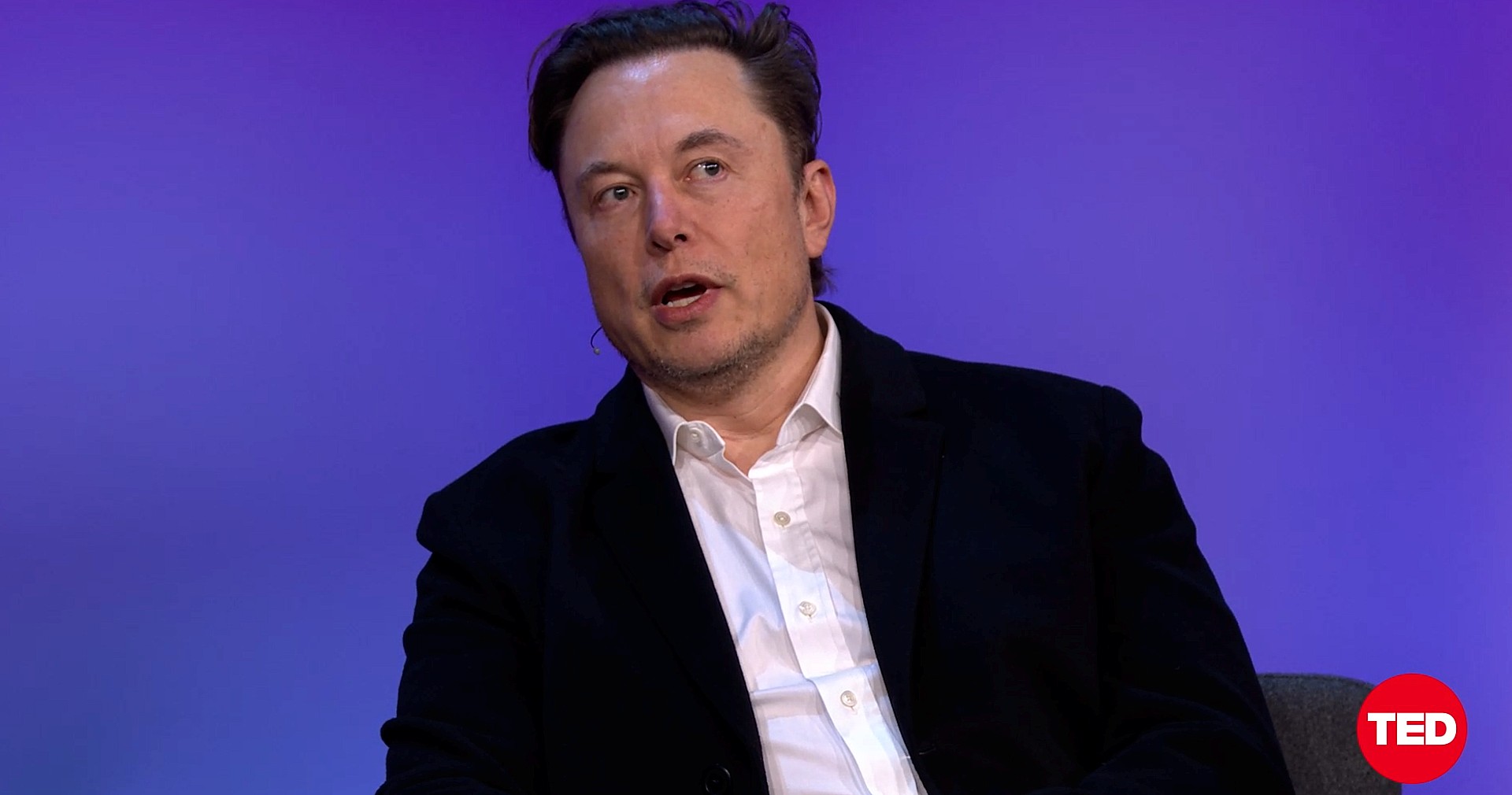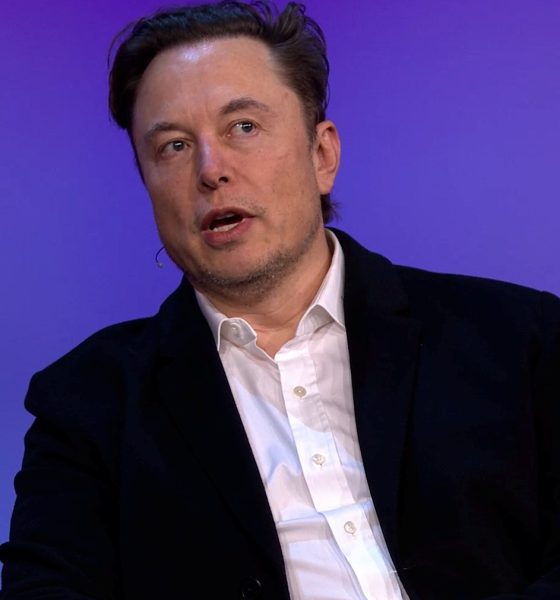

News
Elon Musk corrects presidential candidate who misunderstood Tesla’s Master Plan Part 3
When Tesla Asia announced the company’s new Megafactory in China, US Presidential Candidate Vivek Ramaswamy had some reservations. The candidate noted that the update from Tesla was “concerning” since it would give China an unwarranted advantage. Elon Musk strongly disagreed.
Tesla’s new Megafactory in China will be built in Shanghai’s Lingang area. The facility is planned to be capable of producing 10,000 Megapacks per year, or nearly 40 GWh of energy storage. Construction of the factory is expected to start in Q3 2023, with Megapack production poised to start in Q2 2024. The facility will be supplying Megapacks to global markets.
Ramaswamy, who is running for US President under the Republican Party, stated that while he admires what Elon Musk is doing with Twitter, the CEO’s “doubling down with the CCP” is a completely different matter. The candidate also expressed his disdain for electric vehicle subsidies.
“This is concerning. When we’re all forced to drive electric vehicles, the real master won’t be Elon. It’ll be Xi Jinping, and the name ‘Master Plan 3’ is eerily spot-on. I love what Elon Musk is trying to do with Twitter but doubling down with the CCP is another matter.
“Companies should & will continue to do whatever allows them to be most successful, but it’s the job of US policymakers not to let American companies sell Xi Jinping the rope today that he’ll use to hang us tomorrow. That’s exactly what the climate cult accomplishes, and electric vehicle subsidies are one of many small pawns in that game,” Ramaswamy wrote.
The US Presidential candidate’s comments drew quite a bit of criticism and sarcastic comments from users of the social media platform, several of whom noted that Ramaswamy completely misunderstood Tesla’s Master Plan Part 3. Among these was noted investor David Sacks, who joked that he didn’t know Chinese President Xi Jinping had taken over Tesla’s Gigafactory Texas facility. Sacks’ comment drew a follow-up from Musk.
Musk explained that Ramaswamy’s take on the matter is “wrong on many levels,” particularly since Tesla is growing rapidly in the United States. Plus, Musk highlighted, if Tesla’s competitors are to receive subsidies, there is no reason why Tesla should not be included. That being said, the CEO reiterated his previous point that the EV sector is better off without subsidies at all.
“Yeah, wrong on many levels. Tesla is increasing production rapidly in Texas, California & Nevada. Our competitors require subsidies, not us. That said, if competitors get subsidies, Tesla should get them too. Tesla’s competitive position would improve if all subsidies ended,” Musk wrote.
It should be noted that Musk’s stance against EV subsidies is nothing new. During an interview with The Wall Street Journal at the publication’s CEO Council Summit in late December 2021, Musk actually advised against the Biden administration’s proposed subsidies of up to $12,500 per electric vehicle under the Build Back Better Act.
“It’s worth noting that the (electric) vehicle purchase tax credit, the $7,500, Tesla stopped getting that two years ago. Whereas everyone else except for GM gets the $7,500 tax credit. So all of our sales this year and last year had nothing to do with the tax credit because we’re no longer eligible because we’ve made so many electric cars. Tesla’s made roughly two-thirds of all the electric cars made in the United States. I’m not sure if most people are aware of that. So Tesla’s made roughly twice as many electric vehicles as everyone else has made. Honestly, I would just can this whole bill. Don’t pass it. That’s my recommendation,” Musk said then.
Don’t hesitate to contact us with news tips. Just send a message to simon@teslarati.com to give us a heads up.

Elon Musk
Elon Musk’s X will start using a Tesla-like software update strategy
The initiative seems designed to accelerate updates to the social media platform, while maintaining maximum transparency.

Elon Musk’s social media platform X will adopt a Tesla-esque approach to software updates for its algorithm.
The initiative seems designed to accelerate updates to the social media platform, while maintaining maximum transparency.
X’s updates to its updates
As per Musk in a post on X, the social media company will be making a new algorithm to determine what organic and advertising posts are recommended to users. These updates would then be repeated every four weeks.
“We will make the new 𝕏 algorithm, including all code used to determine what organic and advertising posts are recommended to users, open source in 7 days. This will be repeated every 4 weeks, with comprehensive developer notes, to help you understand what changed,” Musk wrote in his post.
The initiative somewhat mirrors Tesla’s over-the-air update model, where vehicle software is regularly refined and pushed to users with detailed release notes. This should allow users to better understand the details of X’s every update and foster a healthy feedback loop for the social media platform.
xAI and X
X, formerly Twitter, has been acquired by Elon Musk’s artificial intelligence startup, xAI last year. Since then, xAI has seen a rapid rise in valuation. Following the company’s the company’s upsized $20 billion Series E funding round, estimates now suggest that xAI is worth tens about $230 to $235 billion. That’s several times larger than Tesla when Elon Musk received his controversial 2018 CEO Performance Award.
As per xAI, the Series E funding round attracted a diverse group of investors, including Valor Equity Partners, Stepstone Group, Fidelity Management & Research Company, Qatar Investment Authority, MGX, and Baron Capital Group, among others. Strategic partners NVIDIA and Cisco Investments also continued support for building the world’s largest GPU clusters.
News
Tesla FSD Supervised wins MotorTrend’s Best Driver Assistance Award
The decision marks a notable reversal for the publication from prior years, with judges citing major real-world improvements that pushed Tesla’s latest FSD software ahead of every competing ADAS system.

Tesla’s Full Self-Driving (Supervised) system has been named the best driver-assistance technology on the market, earning top honors at the 2026 MotorTrend Best Tech Awards.
The decision marks a notable reversal for the publication from prior years, with judges citing major real-world improvements that pushed Tesla’s latest FSD software ahead of every competing ADAS system. And it wasn’t even close.
MotorTrend reverses course
MotorTrend awarded Tesla FSD (Supervised) its 2026 Best Tech Driver Assistance title after extensive testing of the latest v14 software. The publication acknowledged that it had previously criticized earlier versions of FSD for erratic behavior and near-miss incidents, ultimately favoring rivals such as GM’s Super Cruise in earlier evaluations.
According to MotorTrend, the newest iteration of FSD resolved many of those shortcomings. Testers said v14 showed far smoother behavior in complex urban scenarios, including unprotected left turns, traffic circles, emergency vehicles, and dense city streets. While the system still requires constant driver supervision, judges concluded that no other advanced driver-assistance system currently matches its breadth of capability.
Unlike rival systems that rely on combinations of cameras, radar, lidar, and mapped highways, Tesla’s FSD operates using a camera-only approach and is capable of driving on city streets, rural roads, and freeways. MotorTrend stated that pure utility, the ability to handle nearly all road types, ultimately separated FSD from competitors like Ford BlueCruise, GM Super Cruise, and BMW’s Highway Assistant.
High cost and high capability
MotorTrend also addressed FSD’s pricing, which remains significantly higher than rival systems. Tesla currently charges $8,000 for a one-time purchase or $99 per month for a subscription, compared with far lower upfront and subscription costs from other automakers. The publication noted that the premium is justified given FSD’s unmatched scope and continuous software evolution.
Safety remained a central focus of the evaluation. While testers reported collision-free operation over thousands of miles, they noted ongoing concerns around FSD’s configurable driving modes, including options that allow aggressive driving and speeds beyond posted limits. MotorTrend emphasized that, like all Level 2 systems, FSD still depends on a fully attentive human driver at all times.
Despite those caveats, the publication concluded that Tesla’s rapid software progress fundamentally reshaped the competitive landscape. For drivers seeking the most capable hands-on driver-assistance system available today, MotorTrend concluded Tesla FSD (Supervised) now stands alone at the top.
News
Elon Musk’s Grokipedia surges to 5.6M articles, almost 79% of English Wikipedia
The explosive growth marks a major milestone for the AI-powered online encyclopedia, which was launched by Elon Musk’s xAI just months ago.

Elon Musk’s Grokipedia has grown to an impressive 5,615,201 articles as of today, closing in on 79% of the English Wikipedia’s current total of 7,119,376 articles.
The explosive growth marks a major milestone for the AI-powered online encyclopedia, which was launched by Elon Musk’s xAI just months ago. Needless to say, it would only be a matter of time before Grokipedia exceeds English Wikipedia in sheer volume.
Grokipedia’s rapid growth
xAI’s vision for Grokipedia emphasizes neutrality, while Grok’s reasoning capabilities allow for fast drafting and fact-checking. When Elon Musk announced the initiative in late September 2025, he noted that Grokipedia would be an improvement to Wikipedia because it would be designed to avoid bias.
At the time, Musk noted that Grokipedia “is a necessary step towards the xAI goal of understanding the Universe.”
Grokipedia was launched in late October, and while xAI was careful to list it only as Version 0.1 at the time, the online encyclopedia immediately earned praise. Wikipedia co-founder Larry Sanger highlighted the project’s innovative approach, noting how it leverages AI to fill knowledge gaps and enable rapid updates. Netizens also observed how Grokipedia tends to present articles in a more objective manner compared to Wikipedia, which is edited by humans.
Elon Musk’s ambitious plans
With 5,615,201 total articles, Grokipedia has now grown to almost 79% of English Wikipedia’s article base. This is incredibly quick, though Grokipedia remains text-only for now. xAI, for its part, has now updated the online encyclopedia’s iteration to v0.2.
Elon Musk has shared bold ideas for Grokipedia, including sending a record of the entire knowledge base to space as part of xAI’s mission to preserve and expand human understanding. At some point, Musk stated that Grokipedia will be renamed to Encyclopedia Galactica, and it will be sent to the cosmos.
“When Grokipedia is good enough (long way to go), we will change the name to Encyclopedia Galactica. It will be an open source distillation of all knowledge, including audio, images and video. Join xAI to help build the sci-fi version of the Library of Alexandria!” Musk wrote, adding in a later post that “Copies will be etched in stone and sent to the Moon, Mars and beyond. This time, it will not be lost.”








